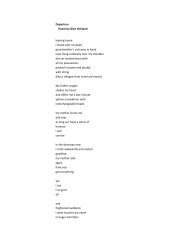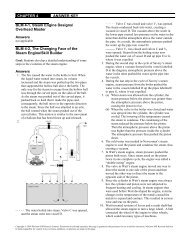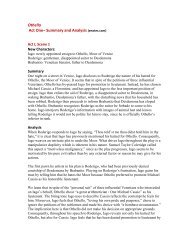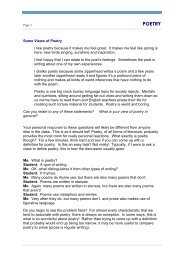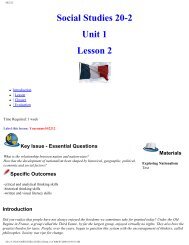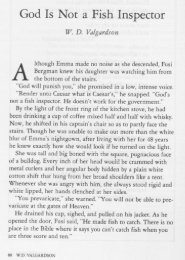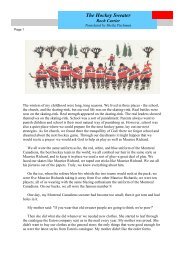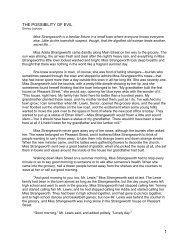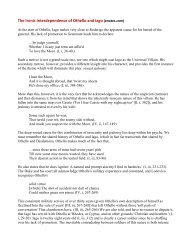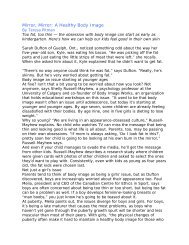Create successful ePaper yourself
Turn your PDF publications into a flip-book with our unique Google optimized e-Paper software.
Page 3<br />
<strong>Shining</strong> <strong>Houses</strong><br />
surroundings were so self-sufficient, with their complicated and seemingly unalterable layout of<br />
vegetables and flower beds, apple and cherry trees, wired chicken-run, berry patch and wooden walks,<br />
woodpile, a great many roughly built dark little sheds, for hens or rabbits or a goat. Here was no open or<br />
straightforward plan, no order that an outsider could under- stand; yet what was haphazard time had<br />
made final. <strong>The</strong> place had become fixed, impregnable, all its accumulations necessary, until it seemed<br />
that even the washtubs, mops, couch springs and stacks of old police magazines on the back porch were<br />
there to stay.<br />
Mary and Danny walked down the road that had been called, in Mrs. Fullerton's time, Wicks<br />
Road, but was now marked on the maps of the subdivision as Heather Drive. <strong>The</strong> name of the subdivision<br />
was Garden Place, and its streets were named for flowers. On either side of the road the earth was raw;<br />
the ditches were running full. Planks were laid across the open ditches, planks approached the doors of<br />
the newest houses. <strong>The</strong> new, white and shining houses, set side by side in long rows in the wound of the<br />
earth. She always thought of them as white houses, though of course they were not entirely white. <strong>The</strong>y<br />
were stucco and siding, and only the stucco was white; the siding was painted in shades of blue, pink,<br />
green and yellow, all fresh and vivid colours. Last year, just at this time, in March, the bulldozers had<br />
come in to clear away the brush and second-growth and great trees of the mountain forest; in a little while<br />
the houses were going up among the boulders, the huge torn stumps, the unimaginable upheavals of that<br />
earth. <strong>The</strong> houses were frail at first, skeletons of new wood standing up in the dusk of the cold spring<br />
days. But the roofs went on, black and green, blue and red, and the stucco, the siding; the windows were<br />
put in, and plastered with signs that said, Murry's Glass, French's Hardwood Floors; it could be seen that<br />
the houses were real. People who would live in them came out and tramped around in the mud on<br />
Sundays. <strong>The</strong>y were for people like Mary and her husband and their child, with not much money but<br />
expectations of more; Garden Place was already put down, in the minds of people who understood<br />
addresses, as less luxurious than Pine Hills but more desirable than Wellington Park. <strong>The</strong> bathrooms<br />
were beautiful, with three-part mirrors, ceramic tile, and coloured plumbing. <strong>The</strong> cupboards in the kitchen<br />
were light birch or mahogany, and there were copper lighting fixtures there and in the dining ells. Brick<br />
planters, matching the fireplaces, separated the living rooms and halls. <strong>The</strong> rooms were all large and light<br />
and the basements dry, and all this soundness and excellence seemed to be clearly, proudly indicated on<br />
the face of each house - those ingenuously similar houses that looked calmly out at each other, all the<br />
way down the street.<br />
Today, since it was Saturday, all the men were out working around their houses. <strong>The</strong>y were<br />
digging drainage ditches and making rockeries and clearing off and burning torn branches and brush.<br />
<strong>The</strong>y worked with competitive violence and energy, all this being new to them; they were not men who<br />
made their livings by physical work. All day Saturday and Sunday they worked like this, so that in a year<br />
or two there should be green terraces, rock walls, shapely flower beds and ornamental shrubs. <strong>The</strong> earth<br />
must be heavy to dig now; it had been raining last night and this morning. But the day was brightening;<br />
the clouds had broken, revealing a long thin triangle of sky, its blue still cold and delicate, a winter colour.<br />
Behind the houses on one side of the road were pine trees, their ponderous symmetry not much stirred by<br />
any wind. <strong>The</strong>se were to be cut down any day now, to make room for a shopping centre, which had been<br />
promised when the houses were sold.



